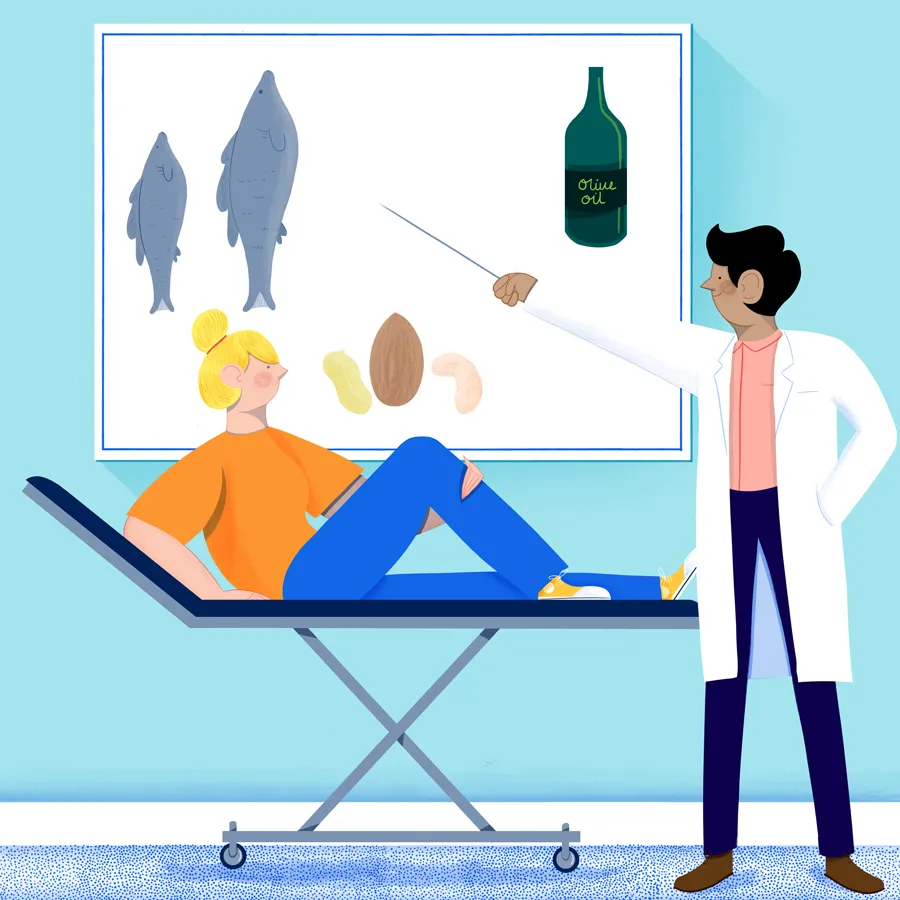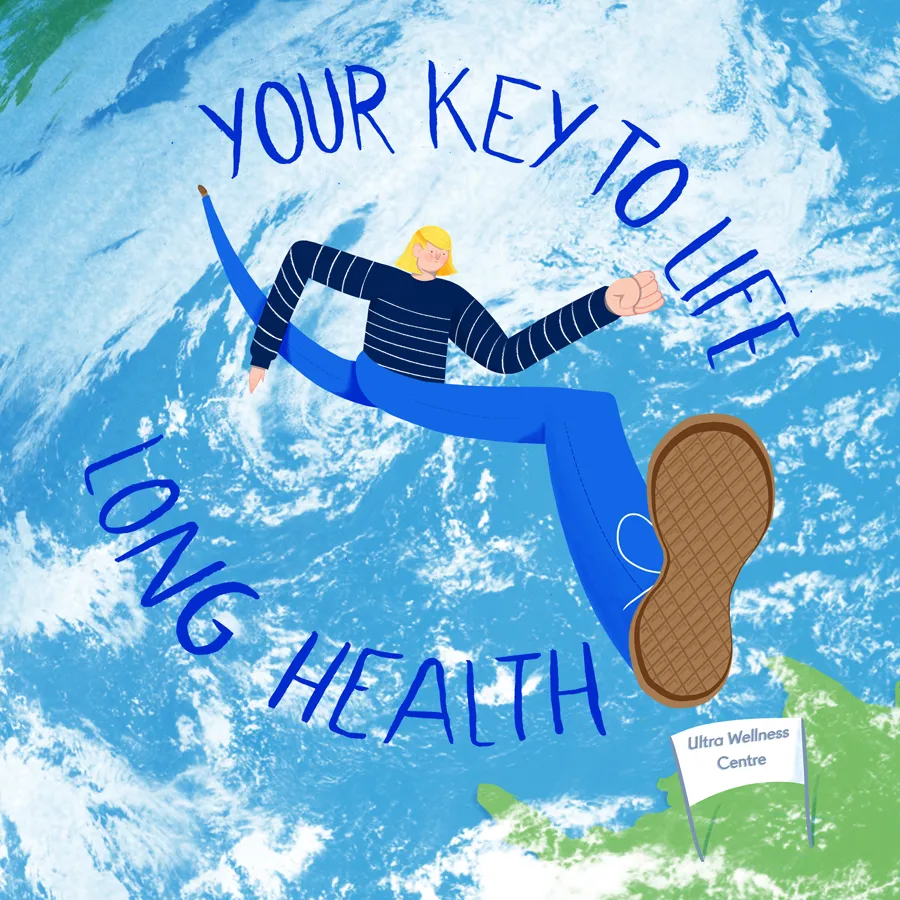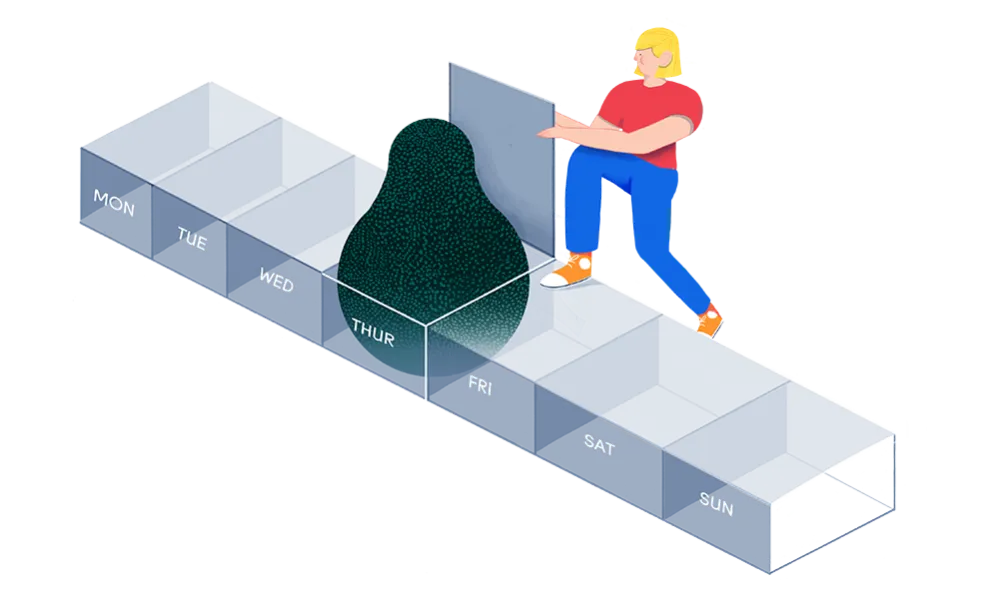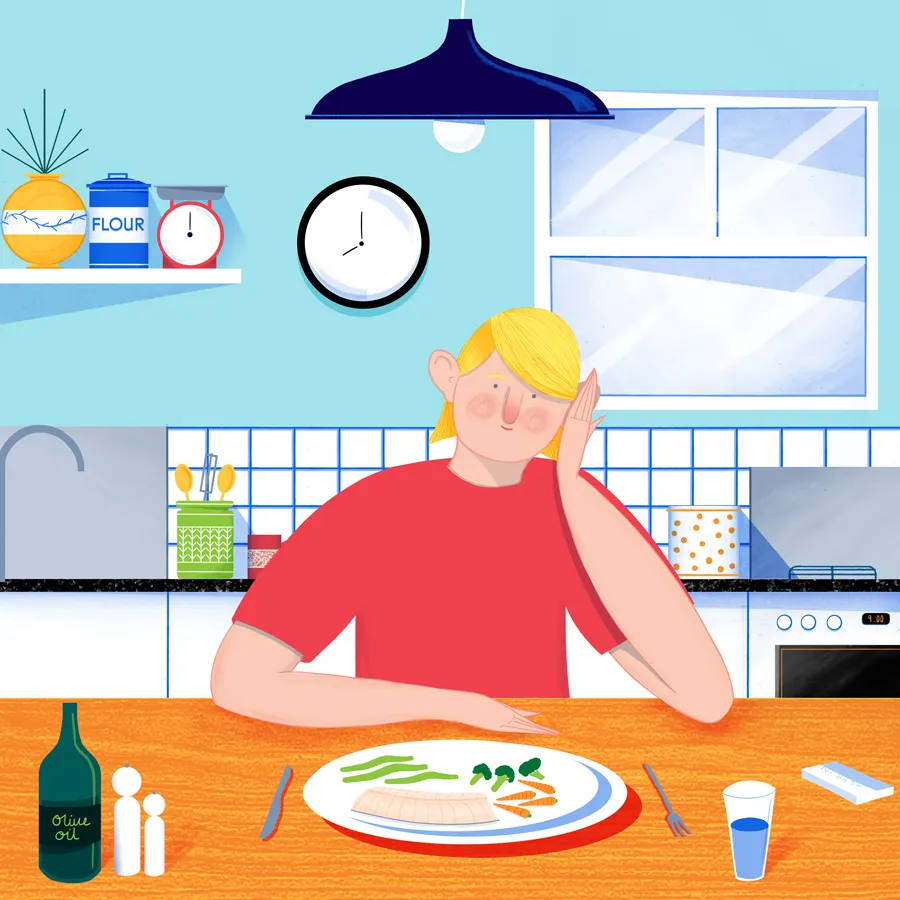“What if you could cure all your health problems and lose 10 pounds in just 7 days? That’s an amazing claim, hard to believe for sure, but I have seen this miracle so many times in my practice that even I am starting to believe it!”
Straight away, the words of Dr Mark Hyman, sometime physician to Bill Clinton, talk-show regular and bestselling author, set off alarm bells. He’s promoting an “anti-inflammatory”, “detox” diet. Well, for two decades, I’ve been in the business of writing careful, evidence-based, often hype-busting stories about methods of improving health and treating disease, and I can’t help assuming this will be like every other fad diet destined to crumble in the face of scientific evidence. What if you could cure all your health problems in just 7 days? Yeah, that certainly sounds like a miracle. And I don’t believe in miracles. But the fact is, I could do with one.
Three years ago, I found out I was in the early stages of a chronic, incurable disease. I have followed what advice my specialist could give me, but my test results have only worsened. Without any evidence-based options remaining, I can only sit back and wait until I become reliant first on a daily pill and then on an injectable drug, while my risks of developing a host of other diseases, including various cancers, soar.
Or… I could step outside the world of mainstream medicine.
I’ve been a science and health journalist for a long time. I’m not about to abandon a belief in the importance of randomised controlled trials for separating medicine from quackery. There’s no chance I’ll take up homeopathy or purchase a ‘healing crystal’. But I am seriously considering an approach that, as far as I can tell, has a growing body of evidence behind it.
It involves thinking of food as medicine, and designing a diet that is not just healthy but can actively treat certain forms of illness. I know there are diets that can help with specific diseases, like epilepsy. So what about mine?

My problem is type 2 diabetes. It is a metabolic disorder in which the body cannot use insulin properly, which means my blood sugar levels can run outside the normal, healthy range. The standard approaches that help a lot of people, at least in the early stages – losing weight, in particular – haven’t helped me. Over the past few decades, though, research has suggested that inflammation plays an important role in type 2 diabetes. It’s also apparent that what we eat can influence levels of inflammation in our bodies.
So, as the rain pelts the windows of the study in my attic in Sheffield, I allow myself a small ray of hope and begin to wonder: Should I try Hyman’s “anti-inflammatory” diet? What would it involve? What kind of a result might I, or indeed any of the millions of people with type 2 diabetes or other diseases related to chronic inflammation, expect? To find out, I decide to visit Hyman’s team of doctors and nutritionists at the UltraWellness Center, Massachusetts, USA. Frankly, the cynic in me cringes just at the name. But my aim over the next few weeks is to set my cynicism, though not my scepticism, to one side.
Perhaps I will find a cure for my diabetes. Perhaps I’ll join the ranks of “miracle” patients. I know it is a desperate hope, tantalising in spite of all my instinctive and professional reservations. So before I go, I have to make sure that manipulating my diet to treat the inflammation that probably underlies my diabetes makes scientific sense.
Cut your finger or catch the flu, and inflammation is your friend. It’s your immune system’s response to infection or injury as it battles any invaders and starts the business of bodily repair.
As with many battles, there’ll be deaths from friendly fire. Some of the chemicals produced by our immune cells are highly toxic and indiscriminate. “They’re meant to destroy things,” points out Philip Calder, professor of nutritional immunology at the University of Southampton. If bacteria are present, they’ll kill bacteria. But they can also take out innocent, healthy cells, too. In the short term, this isn’t a problem: the losses will be worth it. And, when the job is done, like all good systems in our body, inflammation turns itself off. Except when it doesn’t.
In some people, inflammation starts up and doesn’t stop. That may be because the trigger (a virus, say) never goes away. Or because their immune systems have become confused about what a dangerous trigger actually looks like. Or because their bodies have lost the ability to turn it off.
With chronic ‘high-grade’ inflammation, the immune response is permanently ramped up. People with autoimmune diseases, in which the body’s own tissues are mistakenly attacked, fall into this category. “In these cases, you have huge numbers of inflammatory cells at the site, producing huge amounts of chemicals that cause obvious pathological damage to that individual,” explains Calder. “So in rheumatoid arthritis, they destroy the joints. In inflammatory bowel disease, they destroy the gut.” In type 1 diabetes, they destroy beta cells in the pancreas – the cells that produce insulin.
Then there’s chronic ‘low-grade’ inflammation. The cells and chemicals are the same, but the levels aren’t high enough that they’re wrecking healthy tissue. At least, not in the short term. But people with chronic low-grade inflammation are more likely to develop all kinds of diseases associated with ageing, including Alzheimer’s disease, various cancers – and type 2 diabetes. “It seems to be a very common feature of many conditions,” says Calder.

There’s plenty of evidence now that we are more likely to suffer from chronic low-grade inflammation as we get older. It’s also linked to lack of physical exercise, and to eating a diet high in sugar and low in fruits and vegetables. We can’t do much about ageing, but we can be more active and we can change our diets. Certain nutrients can, at least in theory, reduce inflammation. Calder’s research focuses on the potential of omega-3 fatty acids, the sort found in salmon, for example. There are various ways that omega-3s may curb inflammation, he says. One is that they can enter cell membranes, where they replace an acid that would otherwise stoke inflammation.
So it seems the food we choose to eat really can change the level of inflammation in our bodies. This is good news as I prepare to head off to the USA. But before going to the UltraWellness Center itself, I want to get a better idea of the role inflammation plays in type 2 diabetes to confirm that a change in diet might help me.
Gökhan Hotamisligil, professor of genetics and metabolism at the Harvard School of Public Health in Boston, is shaking his head. “If you look at the patient numbers, they continue to grow. The disease is really exploding to a level that the cost to humanity is dramatic.”
He’s talking about type 2 diabetes, a disease he has studied for decades, including the roles of obesity and inflammation. Hotamisligil’s team was the first to show that the accumulation of excess fat stimulates an inflammatory response, and that if you block this response you can improve the action of insulin. Since then, he says, 30,000 papers in this field have been published, with one basic finding noted over and over again: “As you develop obesity, there is arousal of an immune response.”
At least, this happens in most people. About one-quarter to one-third of people who are obese are metabolically healthy: they don’t have chronic inflammation and they don’t have diabetes either. Exactly why they don’t is debated, but it does provide another line of evidence linking inflammation to type 2 diabetes.
Yet more evidence comes from people with autoimmune disease. Someone with an autoimmune disease like rheumatoid arthritis or psoriasis has six times the risk of developing type 2 diabetes. And something interesting has emerged from trials of anti-inflammatory drugs in these people. “Those who receive anti-inflammatories have a very significant reduction in lifetime diabetes risk,” says Hotamisligil.
He and others are even finding hints that type 2 might have an autoimmune component itself. “We don’t know for sure,” he says, “but there is more and more very exciting evidence emerging.” This includes the discovery, in obese people with insulin resistance, of antibodies against various proteins present on pancreatic beta cells. It’s possible that in some cases of type 2 diabetes, inflammation may be slowly degrading the insulin-producing cells (instead of destroying them outright, as in type 1).
For people whose diabetes is fat-related – and whose beta cells are still pretty healthy – weight loss is an obvious strategy, though often easier said than done. Alternatively, some anti-inflammatory drugs are being trialled in people with type 2 diabetes (as well as other diseases linked to inflammation, such as Alzheimer’s). Salsalate, which is related to aspirin, has shown some promise. But if anti-inflammatory drugs are worth trying, what about an anti-inflammatory diet?
“There are some fatty acids that are extremely beneficial,” says Hotamisligil. In fact, he goes on, there are certain fatty acids that, if they could be better characterised and understood, might possibly be incorporated into foods to address inflammation. He thinks the concept of altering foods at the molecular level, with the aim of enhancing the health of the consumer, has a lot of promise: “I am super excited about that, and that is really the next frontier against this multitude of chronic diseases.”
That’s not quite what I had in mind, though, so I ask if he takes any dietary supplements to reduce inflammation himself. He smiles. “If I was convinced there was such a thing, I would take it, because this is what happens as you age… Uniformly, chronic inflammation accompanies all age-related problems.”
But?
“I don’t take anything. I think the evidence has to be developed to a much higher level.”
I've heard the so-called Mediterranean diet may be the way to go, I say. Now he nods: “Yes, without a doubt. That’s the diet I follow.”
As I leave his office, I reflect on everything he’s told me – including in relation to my own case.
I’m not overweight or physically inactive or old. I developed gestational diabetes, the kind that comes on with pregnancy, with my second child. After giving birth, my blood sugar levels returned to normal. Gradually, though, they began to worsen again. Four years on, according to one of three measures routinely used to evaluate blood sugar control, I have crossed the diagnostic cut-off point that separates pre-diabetes from full-blown type 2 diabetes.
I know there’s a subset of people who look lean but have a lot of fat around their internal organs. This can be detected in blood tests looking at fatty acid levels. I’ve had my blood fats analysed and I don’t belong to this group. “So probably you have a problem with your beta cells,” Hotamisligil tells me.
If I have a problem with my beta cells, surely inflammation is the culprit. And if my beta cells are being degraded, rather than destroyed, perhaps I can do more about it through my diet. Hotamisligil and Calder both mentioned essential fatty acids. I know from Hyman’s blog posts that he thinks omega-3s are useful, too. But surely I’ll need more than this to make a big difference.
What if you could cure all your health problems in just 7 days?
What if, indeed…?
A nor-easter has been lashing the windows of my room all night. In the morning, the winds have lessened, but the rain falls relentlessly on the apparently deserted town of Lenox, Massachusetts. As far as I can tell, I’m the only guest staying at my B&B. As I walk through the town, past the closed cafes and the darkened home decor shops, it’s hard not to feel like I’m on the set of a zombie apocalypse movie. Later, I discover Lenox is a summer and ski-season town. It’s where the wealthy from New York and Boston come for a break in their second homes, among the pines. It’s also where the wealthy from New York and Boston, and Jamaica and Lebanon – all over the world, in fact – come to seek help at the UltraWellness Center.
From the outside, it doesn’t look like much. It’s in a small plaza of shops and specialist medical consulting rooms, just off the highway. The second line of the sign on the white single-storey building reads, “YOUR KEY TO LIFELONG HEALTH AND VITALITY”. As I head over to the entrance, the rain stops. The oppressive clouds ease. There’s a hint of sunshine.

I walk in to a smart-hotel-spa-type atmosphere. There are green leather chairs, and a white orchid on a coffee table. Mural-sized prints of sunny forest glades occupy the walls. Soft music is playing. Tammy Boyd, the head of HR, arrives to show me around. She takes me into Mark Hyman’s office. On a bookcase is a framed print of him with Hillary Clinton, on which she has written: “To my dear friend Mark, with admiration for your dedication to improving our healthcare system and giving health and wellness to many.”
I’m not going to meet Hyman, though – he’s out of town. After leaving his office again, Boyd points out an outdoor area with a patch covered in protective transparent sheeting. “We have a garden, so staff can have fresh salad on our lunch,” she tells me. She goes on to talk about the focus here on health as we enter the kitchen, where she swipes what looks suspiciously like a family-size pack of crisps from the counter and hides it in a cupboard. “We can do nutrition demos here,” she explains, not missing a beat. “We might open it up to the public, and show them how to make a smoothie or a soup.”
We arrive at the office of Dr Elizabeth Boham, the medical director, and I ask her about the kinds of patient the Center typically sees. Hyman describes himself as a “whole-list doctor”, because the people who come to see him have a whole list of problems. Yes, says Boham, people come in with a variety of symptoms. Some are struggling with the side-effects of medications they’re on. Or, the side-effects of what they’re being offered are scary. “And they say, ‘Do I have to do that? Can I do it a different way?’”
The Center practises what’s called functional medicine. Look it up online and you’ll find it described as everything from pseudoscience to The Answer. Boham, who trained first as a nutritionist and then as a medical doctor, describes the guiding principle: instead of treating the various symptoms of people with chronic disease, you look hard for the underlying cause of those symptoms, and, if possible, remove that cause. I can’t see too many people arguing with that. It’s the next bit that’s more controversial because here, the cause is usually identified as an environmental trigger – a food allergy or sensitivity, an underlying infection or nutritional deficiency, or a toxin.
In practice, then, Boham starts by gathering information about a new patient’s lifestyle – patterns of sleep and relaxation, exercise, relationships, nutrition and so on. She’ll also investigate other potential contributors to their symptoms. Did the problems start after a course of antibiotics, which might disturb the balance of bacteria in the gut? Has there been a triggering event like menopause or pregnancy? Are there genetic factors that need to be taken into account?
She spends an hour and a half talking to a patient during their first meeting, she explains. After that, they’re examined, then given whatever blood tests she recommends and they can afford, because not all are covered by insurance. The blood tests may probe food sensitivities, hormone levels, inflammatory markers, levels of certain nutrients, or signs of problems with mitochondria, the energy-producing powerhouses of our cells. Everyone who comes in also sees a nutritionist. Depending on the problem, the nutritionist may recommend a diet low on the glycaemic index, or eliminating nutrients that the doctor believes could be causing inflammation.
A detailed, 90-minute consultation, with a doctor determined to look hard for causes and solutions… I contrast that with my specialist back home. She noted that my diabetes began with pregnancy. She noted a family history of diabetes. Her conclusion? I was unlucky with my genes. There was nothing specific she could advise, beyond exercising and controlling my intake of carbohydrates. Inflammation wasn’t even mentioned.
So what would the UltraWellness Center have done differently? To start with, they’d have used the trigger of pregnancy as a crucial clue, because the immune system is suppressed during pregnancy and afterwards rebounds. So they’d focus on addressing inflammation. And that means a change in diet.
The standard diabetic diet is pretty healthy, I think – no cake, no burgers or chips, no fruit juice, no bread unless it’s super-seeded – but it isn’t explicitly anti-inflammatory. Now, though, I am going to learn the secrets of the diet that can “cure all your health problems… in just 7 days”.

Maggie Ward, the nutrition director at the UltraWellness Center, explains that the ‘7-day’ diet is a catch-all, eliminating nutrients they believe are common causes of inflammation: caffeine, alcohol, simple sugars, gluten and trans fats, for example. (For patients who have had detailed blood tests, the team will narrow in on more specific nutrients.) But I don’t think a nutrient is causing the inflammation behind my diabetes, so what should I eat to bring it down? “I’d ensure there is sufficient good-quality protein, and then really bring up the good fats,” she says.
I want more detail, and mention omega-3s. “Yes. A lot of the focus now is on omega-3 oils – getting good-quality fish, nuts and seeds into the diet. From a dietary perspective, that’s how we would bring down inflammation.”
I ask Ward if she recommends omega-3 supplements. For some patients, she says, to start with, she might. But she thinks dietary sources are best: “I really try to encourage most people to get their fats from fish if they can eat it, and from raw nuts and seeds.”
She recommends olive oil as well. It contains a non-steroidal anti-inflammatory compound called oleocanthal, which I later discover works in the same way as ibuprofen. At least some of the pro-health effects of the Mediterranean diet – noted in many epidemiological studies – may be due to this compound.
Anything else? Macadamia nuts and avocados contain oils that have anti-inflammatory effects, she says. And if you consume them in their raw form, rather than as extracts, you get the phytonutrients – plant chemicals that researchers have found can reduce various markers of inflammation.
She also recommends “a good probiotic”. I’ve seen plenty of evidence that the microbes in your gut influence levels of inflammation throughout your body, though exactly what constitutes a good probiotic and exactly what difference it can make in terms of health is debated. An alternative is to consume plenty of fibre, which ‘good bacteria’ thrive on.
And… that’s pretty much it.
I was ready for Ward to recommend all kinds of supplements, and I was ready to challenge her. But she hasn’t. What she does advise seems reasonable and not at all out of line with mainstream thinking.
So how does Ward account for some of the recovery stories they report at the Center, which sound too good to be true? (To be fair, Hyman does stress that it may take a lot longer than a week for people with more serious problems to respond.) If these stories, certainly better than many mainstream doctors would expect from such a change in diet, are true, is there something else going on?
There are many conditions for which a placebo treatment has been reported to work (irritable bowel syndrome is one example). When used in conjunction with human interaction – a caring doctor who takes the time to listen and identify a solution, a nutritionist who’s warm, respectful and concerned – to what extent might that effect be amplified? Could this account for some of the “miracle” recoveries?
I’m expecting Ward to be offended. But she nods: “You mean, do their belief systems play a role? Oh, absolutely. The more I do this, I realise it’s half of medicine. How you present the information and how you support them, and how you are with them, makes the biggest difference. That’s why you see so many trials where a placebo is just as effective as a medication.”
So she actively embraces it?
“You don’t want to give false hope and you do want to be objective and clear with people that there’s only so much we can guarantee. But I really reinforce that the body can heal. And I do that around food. I tell patients: take a moment, pause and look at your food as medicine – and that’s very powerful.”
I walk away from the UltraWellness Center with a lot to think about.
After all my conversations and background research, I decide to go to my GP for an inflammation test. If it shows my levels are elevated, it will support my theory that inflammation is driving my particular case of type 2 diabetes, and I can introduce some of the dietary changes I’ve heard about.
But I find myself thinking, too, about what Ward said about belief systems. She told me about a woman with multiple sclerosis. The patient’s psychiatrist had told her that she was only going to get worse. Ward accepted that this is no doubt what the psychiatrist believed, but the woman felt crushed. That bleak prognosis had taken away all her hope.
What if I take the inflammation test and it shows my levels are normal? Where would that leave me? Because I’m not sure what other tack I could take. Back home in Sheffield, trying to integrate everything I've learned, I decide to skip the inflammation test, start an anti-inflammatory diet anyway, and keep my hopes high.
As a science journalist, do I care if a treatment is working mostly because of a placebo effect? Yes, most certainly. But as a patient? Not so much. There is some evidence that placebos can work even if you know they’re placebos. So while I could never believe in something like a healing crystal or homeopathy, I will try to think of my food as medicine.

Of course, no matter how much I might want it to exist, there is no magic ingredient that can cure diabetes. So I’m not going to worry too much about individual foodstuffs, like turmeric or blueberries, that some studies have suggested may affect levels of anti-inflammatory markers. Instead, I am going to try to stick to a Mediterranean diet, and incorporate more oily fish and more olive oil, while still carefully regulating my carbs and continuing to eat wholegrains and as many (lower-sugar, in my case) fruits and vegetables as I can.
Philip Calder is among those whose work has confirmed the healthiness of the Mediterranean diet. In a detailed review, his team concluded that oily fish, fruit, vegetables and legumes, all used commonly in the diet, are key anti-inflammatory foods.
For many people, adopting the Mediterranean diet means lots of minor changes. “It may be that by changing a lot of things modestly you can have an effect which, in terms of a single nutrient, would require quite a big change,” says Calder. Taken together, cutting out foods that promote inflammation, like sugar and junk food, and consuming more foods that lower it, like oily fish, could have a profound effect.
Dan Winer, a scientist at the University of Toronto who studies the role of the immune system in type 2 diabetes, says he strongly believes that an anti-inflammatory diet with lots of fibre could have beneficial effects on glucose specifically: “Some foods rich in omega-3 fatty acids are anti-inflammatory and have been shown to have some glucose-regulating properties,” he explains. “Both probiotics and prebiotics (such as fibre) are thought to help reduce harmful inflammatory components leaking from the gut into the circulation.”
As well as changing my diet, I also start taking a mini-aspirin every day. I figure that for me, the potential extra benefits in reducing inflammation outweigh a low increased risk of internal bleeding.
Seven days later, there has been no miracle – my sugar levels still spike after a slice of cake. Still, I have come a long way. While my specialist could offer nothing helpful, I feel convinced that inflammation is the problem and that tackling it has to be the solution. I am going to stick with my new regimen. Perhaps a mini-aspirin and a Mediterranean diet won’t be enough to make a difference to my blood sugar control, but I can’t help hoping that the next time my diabetes is evaluated by my GP, my results will have improved, and that they’ll continue to get better.
And if I do improve, even if only a little, and even if it’s only because I believe I should…? Well, it won’t be a miracle, but I’ll take it.
This article was originally published in March 2016. It first appeared on Mosaic and is republished here under a Creative Commons licence.